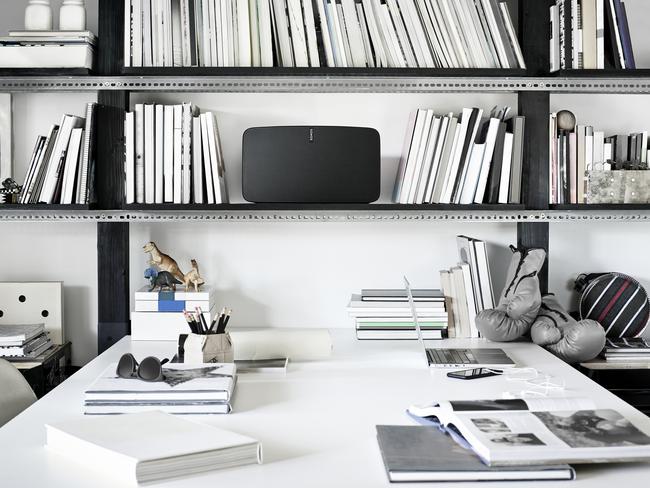The home theatre of the future: Bigger is better but at a low cost
HOME theatre trends are clear: we want simple, wireless units that are big on screen size and low on cost. Here are five ways to do it.

HOME-ENTERTAINMENT trends are clear this year: televisions are getting bigger and cheaper, movie buffs are opting for all-in-one soundbars over complicated home-theatre-systems, and wireless music delivery is the way to go.
In short, home theatres have never been so inexpensive or hassle-free.
Research firm GfK on the first six months of 2015 show the consumer electronics market is booming but growing in new directions.
In televisions, ultra high-definition screens are the fastest growing market but their popularity is merely consolidating after the FIFA World Cup last year sparked soccer fans around the world upgrading their old TVs.
Television screens continue to grow in size, however, with GfK reporting the average size of TVs in Europe during 2010 was 79cm and is now 97cm, even though the prices of new televisions have dropped.
When it comes to sound systems, the trend is for simplicity and wireless connectivity, with all-in-one soundbars the growth market.
The research firm’s figures show more than 11 million soundbars were sold globally last year — 64 per cent more than 2013. This year, GfK forecasts that figure will rise again to more than 14 million soundbars.
Soundbars with external subwoofers are particularly hot items, according to the company, and Bluetooth connectivity is the key factor in purchasing decisions as consumers increasingly opt for the simplicity of playing music from smartphones and tablets.
For consumers, the good news with all of these trends is that creating a home-theatre or listening to high quality music throughout your home doesn’t need to cost a small fortune.
Here are five tips for creating a home theatre on a budget.
1. Cheaper big-screen TVs: Televisions are not just getting more advanced, they’re becoming cheaper by thousands of dollars. While the first OLED (organic light-emitting diode) televisions cost $10,000 when they launched in Australia in 2013, but this year LG launched an ultra high-definition 55-inch OLED TV with four times the pixels for $4000 less. Similarly, Samsung has dropped the price of its 78-inch Series 9 SUHD television by $3000 since its launch earlier this year, now selling it for $9000, while a more modestly sized 48-inch SUHD TV costs $3300 -- $1700 less.

2. Adding smarts: If you’re not ready to upgrade your television, there are still ways to get apps and streaming content to show on the biggest screen in your home. Google’s Chromecast device, priced at $49, can stream games, apps, movies and photos to most televisions. The stick-shaped device simply plugs into a TV’s HDMI port and connects to a phone or tablet wirelessly. Alternatively, Apple will soon release an update to its TV box that will deliver more apps including games, new software, and add Siri to the remote control to search for content. The new Apple TV is expected to launch this month. The current model costs $109.
3. Look for versatility: Soundbars are long, single speakers that replace multi-speaker setups in lounge rooms. There are many available to boost TV audio, but increasingly companies are coming up with ways to add extras to their form. The Philips Fidelio B5 Soundbar ($1100), for example, has two removable speakers at each end that can be placed behind your couch for surround-sound movie watching. LG’s budget model LAS35OB ($249) links wirelessly to a subwoofer.

4. Start small and build: Sonos created wireless music system nearly 15 years ago and big names in home-entertainment have followed its lead. These speakers wirelessly connect to one another and your smartphone or tablet computer to play music. They can be used to play the same music throughout your home, or different music in each room, receiving instructions from a connected device. One reason they gained popularity is users can start small, with just one speaker, and build on their system later. A Sonos Play: 1 speaker costs $299 and is a good starting point. Later, if you purchase two, you can set them as a stereo pair. Add a Playbar ($999) and you’ve got a 5.1-channel home-theatre setup more versatile than something just used for watching movies.

5. Be power wise: Smart devices can help you monitor power usage so you don’t waste money when not using your devices. The WeMo Insight Switch by Belkin ($100) lets you set up a schedule when your devices can be used and helps you monitor their power usage costs.
Start collecting your Ultimate Family Movie Collection next weekend. The first DVD and collector case is FREE with purchase of your News Corp newspaper.



